How to deal with wasps in your summer cottage
1. Where insects make their nests.
2. How to find a wasp's nest.
3. How to get rid of wasp nests.
4. Preparations for the destruction of wasps.
5. Folk remedies for wasp control.
6. What to do in case of wasp stings.
Wasps are unwanted and sometimes dangerous neighbors in a summer cottage.If they have settled in your dacha, you need to try to get rid of wasps for several reasons.
- Firstly, striped aggressors can bite summer residents if for some reason they decide that they are in danger.
- Secondly, they can be carriers of various infections.
- And finally, during the ripening of fruits and berries, the wasp family can spoil a significant part of the harvest in the garden.
Where wasps make their nests
Most often, gardeners have to deal with paper wasps. They are social insects that live in a colony founded by a queen wasp. The founding queen looks for a secluded, dry place to build her nest in the spring. This could be an attic, some kind of void in the wall of the house, under the roof, under the floor.
|
It happens that paper wasps make their home on the ground, under tree roots, in the voids of rotten stumps and logs. |
Sometimes wasps can make a nest in bushes or on a tree under the cover of dense foliage. Abandoned rodent burrows and old anthills can be used.
The wasp's nest may be located directly in the ground. This is already the work of the earth wasp, which digs vertical passages with lateral branches in loose soil. The result is an extensive underground network. On the surface of the earth you can only see a small hole - the entrance.
How to find a wasp nest
The queen builds the nest by chewing pieces of wood and turning them into paper, which is a building material. At first, the nest consists of several cells. The queen wasp lays eggs and feeds the larvae. As soon as the first worker wasps hatch, the construction of the nest and the search for food for the larvae is transferred to them.
The uterus is exclusively engaged in laying eggs.The wasp family grows rapidly and can reach several hundred insects. We need to get rid of such a dangerous neighborhood.
To solve this problem, you need to find the nest and destroy it. How to find?
If wasps have made a nest somewhere in the house, it is enough to carefully monitor their movements. Working individuals are busy delivering building materials and food to the hive for the larvae and the queen, so they will return in one direction - to the nest.
There is an interesting, simple way to detect a nest on the territory of a summer cottage. You need to put a piece of fresh meat or fish somewhere and wait. Since the larvae feed only on protein foods, striped predators will not refuse such prey. All that remains is to carefully monitor where they are taking the food.
How to get rid of a wasp's nest
- If the wasp's nest is located in a hard-to-reach place, it will not be easy to destroy it yourself. In this case, it is better to invite a specialized team of exterminators. Professionals, equipped with everything necessary, will quickly solve this problem. Of course, this work will have to be paid for.
- A relatively safe method for self-control of wasps is the use of poisoned baits. You need to use insecticides without a strong odor. Mix food that is attractive to wasps with poison and place it in an open place. The insects will fly in to feast on themselves and take the poisoned food to the nest for the larvae and queen. All that remains is to wait for the poison to take effect.
If the wasp nest is in an accessible place, then it will be easier to get rid of it:
- You need to take a thick bag of a suitable size and put it on the nest. Tie the bag tightly, sharply separating it from the attachment point. Further at your discretion.You can place the bag in a bucket, press it down with a weight and fill it with very hot water. Or you can burn the nest. It is better not to use open fire. It would be safer to place the bag with wasps in some metal container with a lid (barrel, bucket).
- Pour or spray a little insecticide into a tight plastic bag, put it on the wasp nest and tie it tightly, excluding air access. The wasps should die within a few hours.
- Apply insecticidal spray to the nest and quickly retreat. To consolidate success, repeat the treatment every other day.
- Fill the earthen nest with a large amount of water, to which add a drug to kill wasps. Plug the entrance with a stone or rags soaked in insecticide.
- Liberally sprinkle the area near the entrance to the earthen nest with insecticidal powder. Wasps carry the powder into their home on their paws, infecting all inhabitants.
When using the above methods of control, the following safety precautions must be observed:
- To protect against possible attacks of angry insects, you need to dress in thick protective clothing, a hat with a mosquito net, and gloves. Tuck your pants into your boots.
- All actions should be carried out in the dark, when all the wasps are in the nest and inactive.
- You need to act without noise and fuss, quickly and decisively.
Effective drugs for killing wasps
GET is a modern, effective product that has a wide range of applications and allows you to quickly get rid of wasps. The active ingredient chlorpyrifos is in microcapsules. The drug is harmless to humans and animals, without a pungent odor. Can be used to prepare poisoned bait. The wasps carry insecticide-laced food to the nest for the larvae and queen.As a result, everyone dies.
The drug is diluted in water according to the instructions (1:15), sprayed on the wasp nest and the area around it. Insect death occurs upon contact with the insecticide.
If the nest is in the ground, the prepared solution is poured through the inlet. Plug the outlet with a rag soaked in the same solution.
MASTER 250 is a drug based on chlorpyrifos. The active substance is in microcapsules. In its properties and application, the insecticide is similar to GET.
DELTA ZONE is an effective broad-spectrum product based on deltamitrin. Microcapsules with the active substance stick to the legs of insects and are carried into the nest. As a result, all the inhabitants of the nest die.
Due to the absence of a pungent odor, the drug can be added to bait.
KARBOFOS is an old proven remedy against many pests and is successfully used in the fight against wasps. Karbofos dissolves well in water and has a pungent odor. Spray the nest generously with the solution prepared according to the instructions. To get rid of dangerous insects, more than one treatment may be required.
Karbofos is also used to destroy wasp nests in the ground. Dilute 75 g of karbofos in a bucket of water and pour into the nest.
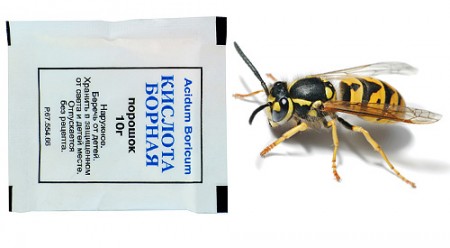
100 g of boric acid is diluted in a bucket of water and poured into an earthen nest. The entrance hole must be plugged or pressed down with a stone.
MOSKITOL is a specialized aerosol for killing wasps. Spray the aerosol generously onto the nest from a distance of 1.5-2 m.
Folk remedies for wasps
The most common folk remedy for wasp control is traps.
- The top third of the bottle is cut off from a plastic one and a half bottle and tightly inserted into the remaining part with the neck down. Water with honey, fermented compote or jam diluted with water is poured into the trap. Attracted by the treat, the striped robbers climb into the bottle and stay there. Of course, this method will not completely get rid of wasps, but it will help to significantly reduce the number of these insects on the site. The more traps you place in your yard, the more noticeable the results will be. You just need to remember to clean the bottles of dead insects and add sweet foods.
- Add a crushed fly agaric cap and 100 g of honey to a glass of water. Boil the mixture for three minutes. The cooled bait is laid out near the insect habitats. All actions must be performed with gloves. The wasps will not fly past the sweet mushrooms; they will try them themselves and take them to the nest.
- If the nest is in the ground, you can get rid of it by pouring a bucket of boiling water over it. It is necessary to pour through the inlet, which is then plugged with a stone or covered with earth and compacted.
- Place pieces of calcium carbide into the hole - the entrance of the earthen nest and fill it with water. When interacting with water, a gas is released, which penetrates the nest and has a detrimental effect on the wasps.
What to do for wasp bites
In most cases, when a person is stung by a wasp, a local reaction occurs in the form of swelling and redness of no more than 10 cm, accompanied by burning pain and itching. In this case, it is enough to take the necessary first aid measures:
- Treat the bite site with any antiseptic solution. Hydrogen peroxide, alcohol tincture, cologne, vodka, etc. are suitable. It is better not to use iodine and brilliant green.
- Apply cold to the bite site for 20-30 minutes. It is good to use ice cubes, some bags of frozen food, napkins soaked in cold water. These measures stop the absorption of poison into the blood and its spread throughout the body.
- If you are bitten on the leg or arm, you can apply a tourniquet with a mandatory indication of the time of application. This will also stop the further spread of the poison and the possible development of an allergic reaction. The tourniquet must be removed after 30 minutes!
- Take an antihistamine (Zodak, Suprastin, Claritin, etc.)
- To relieve symptoms, use ointments and gels with antiallergic and antipruritic effects (Fenistil gel, Psilo-balm, Moskitol gel, etc.)
Usually, symptoms go away within 2-3 days and no doctor’s help is required.
For emergency medical help you should contact:
- If a wasp stings your face, neck, lip, tongue.
- With multiple bites of one or more insects.
- If the swelling increases during the day and reaches large sizes (more than 10 cm).
- With the development of urticaria, when the body is covered with multiple blisters.
The most dangerous are angioedema and anaphylactic shock, which can develop rapidly and pose a threat to life.
Quincke's edema is also called giant urticaria. Hoarseness of voice, difficulty breathing, barking cough, swelling of the lips, cheeks, eyelids, and limbs indicate the possible development of Quincke's edema in a person. The victim's blood pressure may drop and tachycardia may begin.
Anaphylactic shock is expressed in a sharp drop in blood pressure.A person has difficulty breathing, tachycardia, bluish skin and lips appear, and loss of consciousness is possible.
If a person develops such reactions after a bite, it is necessary to urgently call an ambulance. Before doctors arrive, provide first aid to the victim.
What you need to know:
- You are at risk if you are allergic to any allergens. A wasp sting can provoke an acute allergic reaction.
- If you have had a severe reaction to a bee or wasp sting, the next time you are stung, the reaction will be many times stronger.
What to do: - It is necessary to visit an allergist who will prescribe the necessary medications and write down an algorithm of actions in the event of anaphylactic shock or Quincke's edema.
- When traveling to the country or to nature, carry with you an allergy sufferer’s passport with an action algorithm, syringes, adrenaline, prednisolone, and antihistamines.
If you are in a summer cottage or in nature where there may be wasps, follow these rules:
- Do not apply strong-smelling cosmetics or perfume on yourself. These scents will attract wasps and hornets. They are also attracted to bright clothes.
- Do not walk barefoot in areas that have not been checked for wasp nests.
- If a wasp flies up to you, behave calmly and do not brush it off. The insect will take your sudden movements for aggression and will attack.
- Don't leave drink bottles open, as wasps can get in there.
- To provide first aid to a stung person, your first aid kit should always contain antiseptics, antihistamines and ointments, and a medical tourniquet.
Getting rid of wasps in your summer cottage is not as difficult and scary as many people think.
Have a nice holiday!
You might be interested in:
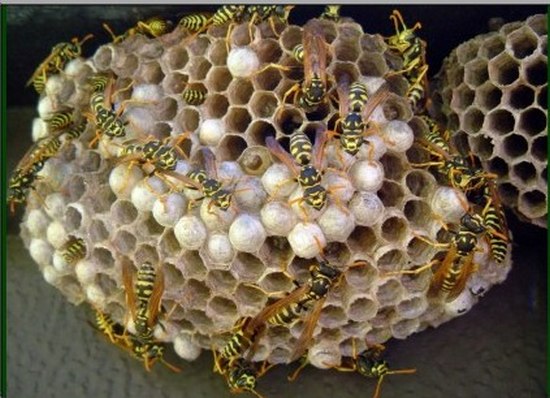
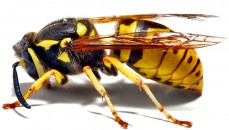
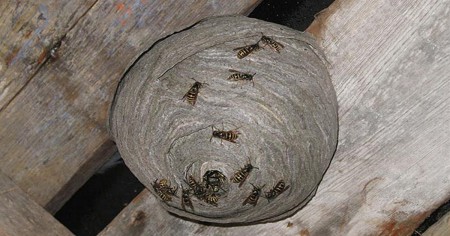
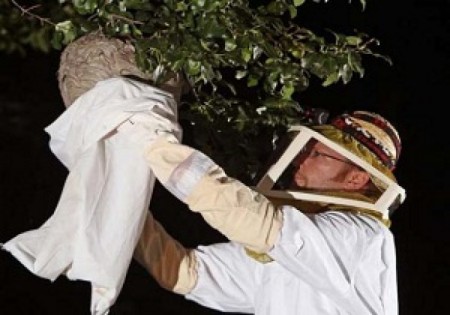
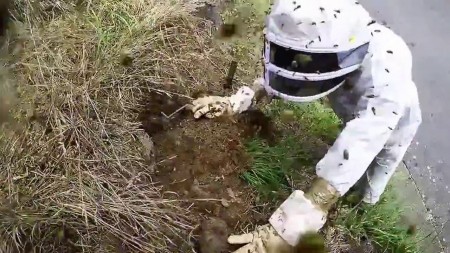
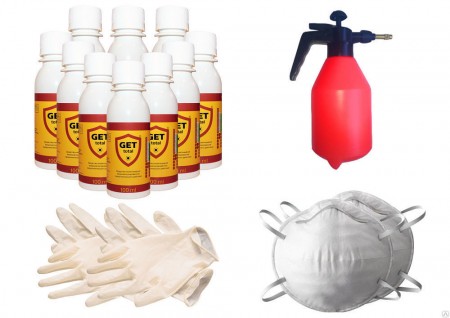
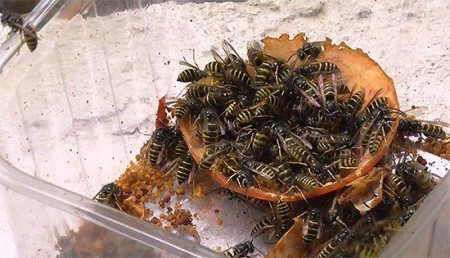

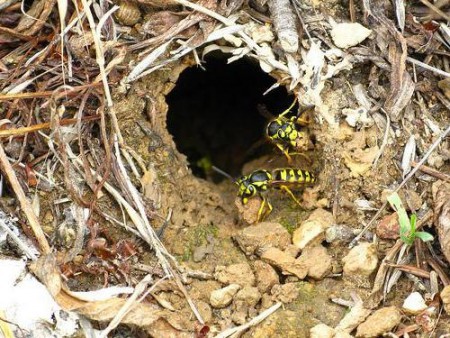
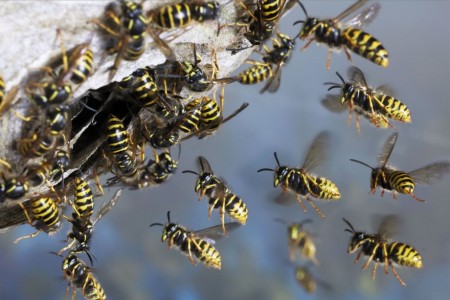

 CUCUMBERS NEVER GET SICK, I'VE BEEN USING ONLY THIS FOR 40 YEARS! I SHARE A SECRET WITH YOU, CUCUMBERS ARE LIKE THE PICTURE!
CUCUMBERS NEVER GET SICK, I'VE BEEN USING ONLY THIS FOR 40 YEARS! I SHARE A SECRET WITH YOU, CUCUMBERS ARE LIKE THE PICTURE! You can dig a bucket of potatoes from each bush. Do you think these are fairy tales? Watch the video
You can dig a bucket of potatoes from each bush. Do you think these are fairy tales? Watch the video
 How our fellow gardeners work in Korea. There is a lot to learn and just fun to watch.
How our fellow gardeners work in Korea. There is a lot to learn and just fun to watch. Eye trainer. The author claims that with daily viewing, vision is restored. They don't charge money for views.
Eye trainer. The author claims that with daily viewing, vision is restored. They don't charge money for views. A 3-ingredient cake recipe in 30 minutes is better than Napoleon. Simple and very tasty.
A 3-ingredient cake recipe in 30 minutes is better than Napoleon. Simple and very tasty. Therapeutic exercises for cervical osteochondrosis. A complete set of exercises.
Therapeutic exercises for cervical osteochondrosis. A complete set of exercises. Which indoor plants match your zodiac sign?
Which indoor plants match your zodiac sign? What about them? Excursion to German dachas.
What about them? Excursion to German dachas.